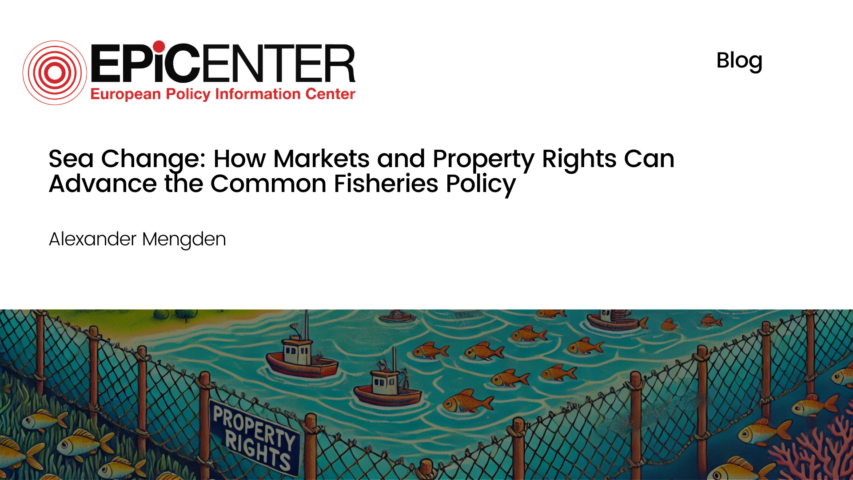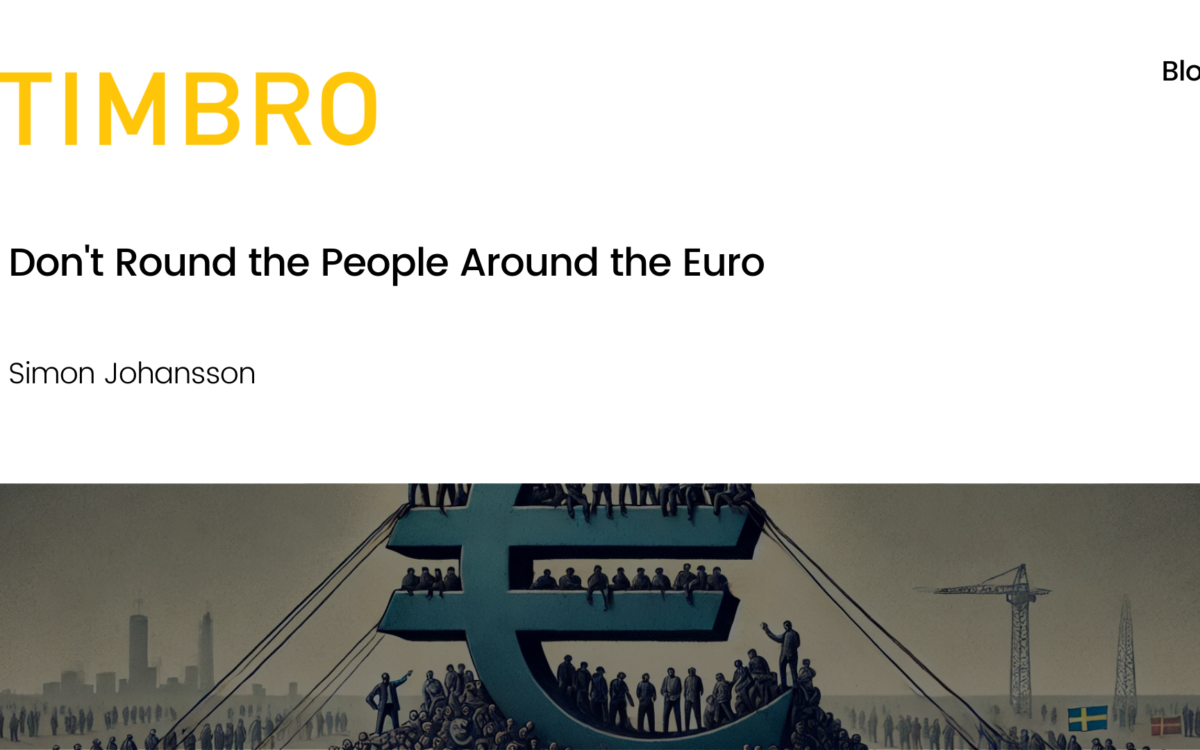Sea Change: How Markets and Property Rights Can Advance the Common Fisheries Policy

Sea Change: How Markets and Property Rights Can Advance the Common Fisheries Policy
Alexander Mengden // 12 April 2017
As the United Kingdom withdraws from the European Union, the UK Government is expected to lay claim to a 200-nautical-mile fishing border off its coastal line and renegotiate agreements for fishing stocks that are shared with the European Union and neighbouring countries. Leaving the Common Fisheries Policy (CFP) and the perceived opportunities associated with that aim is the reason the British fishing industry has fiercely campaigned for Brexit. But it is not only the government of the United Kingdom that needs to decide what its future fishery policy will look like – there are good reasons why the European Union should also strive to rethink its Common Fisheries Policy and implement more substantial reforms. While there has been considerable progress and the latest reform efforts since 2013 are steps in the right direction, European fisheries policy is still highly plagued by interventionist command-and-control approaches that have resulted in overfishing and decimated fishing stocks, overcapitalisation of fishing fleets, and other waste and inefficiencies – most notably illustrated by the high amounts of fish thrown back into the sea each year.
The core problem that fishery policy is (or should be) concerned with is that fishing stocks are common pool resources and thus subject to a phenomenon that is known in economics as the tragedy of the commons: In the open seas, fish stocks are both limited in quantity (‘rival’) and accessible to many independent fishermen, each of whom can harvest them (‘non-excludable’). Thus, it is rational for everyone to fish as intensively as possible and exploit as large a share of the common fishing stocks as they can, without regard for the consequence of everyone acting in the same way. As a result, the common fish stock will not be protected but becomes subject to over-exploitation that finally leads to its depletion – a result that is to everyone’s disadvantage.
The central challenge of fishery policy is therefore to put an end to such open-access regimes in which the stock becomes overexploited and decimated, and implement the most efficient mechanisms to ensure that fishing stocks are harvested sustainably in a way that maximises the long-run harvest.
The traditional solution to such problems that economic theory suggests is to privatise the resource and give exclusive property rights over it to different individual parties. In this way, each owner would have optimal incentives to protect his fish stocks and harvest them in a way that maximises his longrun yield. With privately owned fish ponds, this is exactly how it works. In the case of ocean fisheries, however, it is more complicated to assign property-rights because physically separating parts of the ocean would be unimaginably difficult and costly, and we cannot track or control the movement of fish that swim around over wide distances. However, economists have long ago found ways to get around these difficulties and assign property rights in sea fisheries via individual transferrable quotas (ITQs) and self-governance of fishermen via common property systems.
Successful fishing nations such as Iceland, but also to a lesser degree New Zealand and Norway, provide good examples for how such an approach might work in practice. Although these places are no purist free-market utopias, their stronger reliance on property rights and local governance set successful examples for an approach to fishery policy that is far more sustainable and efficient.
In Iceland, the government sets a total allowable catch (TAC) each year, informed by scientific advice from its Marine Research Institute. This total is divided into individual transferable quotas (ITQs) that are given to each fishing vessel on basis of its three-year average catch of the fish species concerned. This quota settles the boat’s share of the total allowable catch of that fish for the entire country. The quotas can under certain conditions be traded among different boats. Bycatch must be landed and recorded as part of a boat’s quota, discards are prohibited. If a boat has caught more than allowed by its quota, the owner must buy one from another boat to account for all catches. Boats can carry forward 20 per cent of its quota for a year, and 5% of the next year’s quota can be claimed in advance. There are no legal restrictions on the times that boats are allowed to fish. In order to protect spawning and younger fish, some fishing grounds are closed during the spawning season, and in certain areas, fishing is banned completely. Inspectors also have the authority to declare fishing in certain areas prohibited with immediate effect. Trawlers are only allowed from 12 nautical-miles from the coastal line.
Europe can learn a lot from such examples of rights-based fishing for its Common Fisheries Policy. In a reform that stresses the ideal of ‘doing less more efficiently’, the European Commission and Council of Ministers would focus on devising the basic rules that establish durable and tradable property-rights in catch-shares, while the leaving the implementation and policing of more technical measures like setting annual TACs to regional fishing communities.
The presumably best way to establish property rights in fisheries for species that can move over longer distances is to distribute individual-transferrable quotas that give their owners a right to a fixed share of the total allowable catch, and are freely tradable.
As proposed by a UK public campaign in 2010, the European Union will gradually implement a discard ban until 2019. That means that discards are no longer allowed and all fish must be landed and counted against the quota. (Although it may be noted that they still allow for discards that do not exceed 5 percent of the total quota) Additionally, fishermen are allowed limited trade in quotas so that vessels that exceed their quota can purchase additional shares from other market participants that have not exhausted theirs, and can ‘bank and borrow’ 5-10 per cent of their quota of the next year. These changes constitute substantial progress in making the CFP more efficient by reducing overfishing and preventing wasteful discards of fish, and should be carried further by removing restrictions on quota trade, extend them into perpetuity and allow regional fishing communities to set even tighter discard allowances.
One core advantage of ITQs is that they allocate fishing rights to those who can harvest a given amount of fish most efficiently because they buy the rights from others who derive less profits from them. It would be beneficial to remove as many restrictions as possible to the trade of quotas and open them to being bought and sold by speculators. This has the advantage of holding the right capacities for bycatch and quota excesses; moreover, quota prices, reflecting expected future profits, can be used as an early warning signal for overfishing, and thereby guide fisheries policy by providing better information.
Further, property rights in catch-shares give their owners an incentive to maximise their long-run profits from these by protecting their fish stocks and fish below the maximum sustainable yield. As Costello, Gaines and Lynham (2008) conclude from a wide array of catch statistics in 11,135 fisheries from 1950 to 2003, “Implementation of catch shares halts, and even reverses, the global trend toward widespread collapse.” This is mostly seen as a consequence of the durability and security of property rights that gives fishermen a vital interest in protecting their fishing stocks, as doing so maximises their long-term profits. It is thus essential that tradeable quotas extend into perpetuity. As both standard economic theory and empirical research by Grainger and Costello (2012) suggest, insecurity of property rights from government seizure leads to a measurable depreciation of asset prices via a higher discount rate, and thus the revenues of future fishing stocks are less valued and cared for. This implies that stronger property rights strengthen incentives for better stewardship and sustainable treatment of resources.
Because transferrable quotas target the negative effects of overfishing directly, they are also devoid of unintended consequences that accompany less targeted interventions such as restrictions on fishing times. Because rights-based fishing ends the race for fish in the shortest possible time, it makes the work of fishermen substantially safer and reduces risky behaviour such as fishing in poor weather, as shown by Pfeiffer and Gratz (2016).
With regards to more specific regulations of fisheries policy, the European Union should adopt a much more polycentric approach that empowers regional fishing communities to govern themselves, giving the decision-making power into the hands of those who have a stake in them. Most importantly, the setting of annual TACs should be left to fishing communities, constituted by the owners of catchshares. These have better incentives to make the right decisions as they have an economic stake in the present value of their quotas, and they thus have an interest in devising efficient regulations that maximise their long-run profits by promoting sustainable fishing practices that protect fishing stocks. Further, they also have the local knowledge of the ecosystems and their local business practices that is crucial for efficient decision-making. As the research of Elinor Ostrom (1990) shows, these features often make regulation of common-pool resources by self-governed local communities more efficient than top-down solutions imposed by central planners.
The Common Fisheries Policy still has deep flaws that are widely recognised – it leads to overfishing, overcapitalisation, high discard rates and other effects that are detrimental to sustainability and efficiency. These problems have been acknowledged in the current reform process that started 2013, and European policy makers are continually making progress by implementing steps that lead in the direction of a more decentralised and market-oriented system.
However, there are still many opportunities for improvement left and much more can be gained if these reforms are carried further to embrace a much bolder agenda for property-rights-based fisheries management. Such a reform would require the European Commission and Council of Ministers to focus on setting the abstract rules and securing essential property rights by establishing individual transferrable quotas that extend into perpetuity and are openly tradable for everyone. At the same time, the rights to set total allowable catches, as well as to implement, monitor and police more specific regulations should be further transferred to regional fishing communities in which the owners of catch-shares make the decisions.
EPICENTER publications and contributions from our member think tanks are designed to promote the discussion of economic issues and the role of markets in solving economic and social problems. As with all EPICENTER publications, the views expressed here are those of the author and not EPICENTER or its member think tanks (which have no corporate view).



